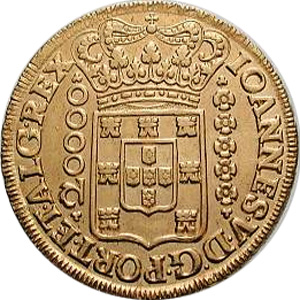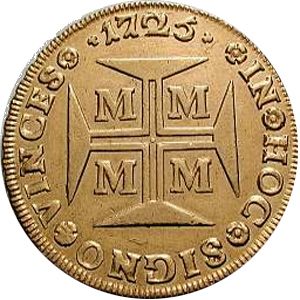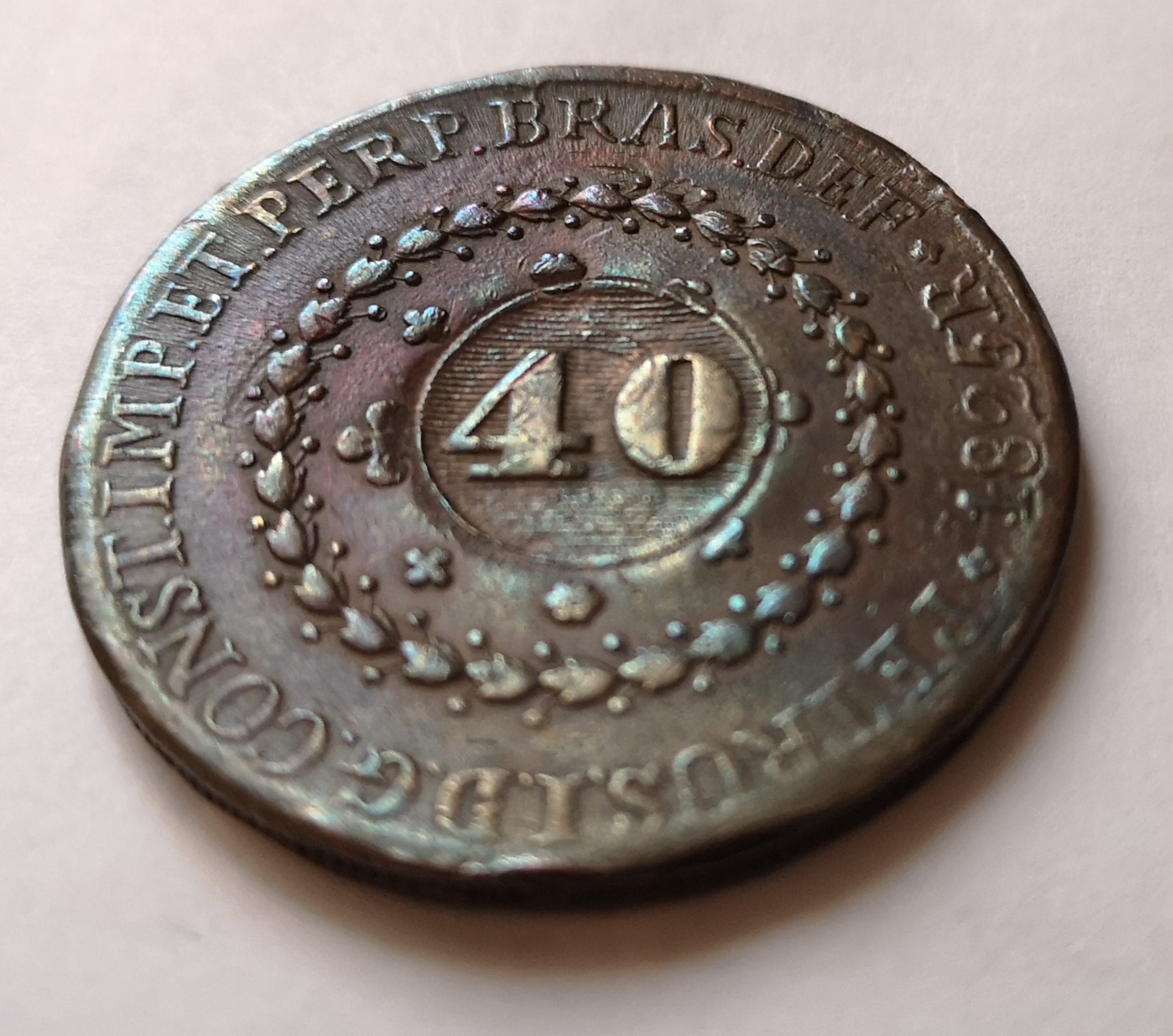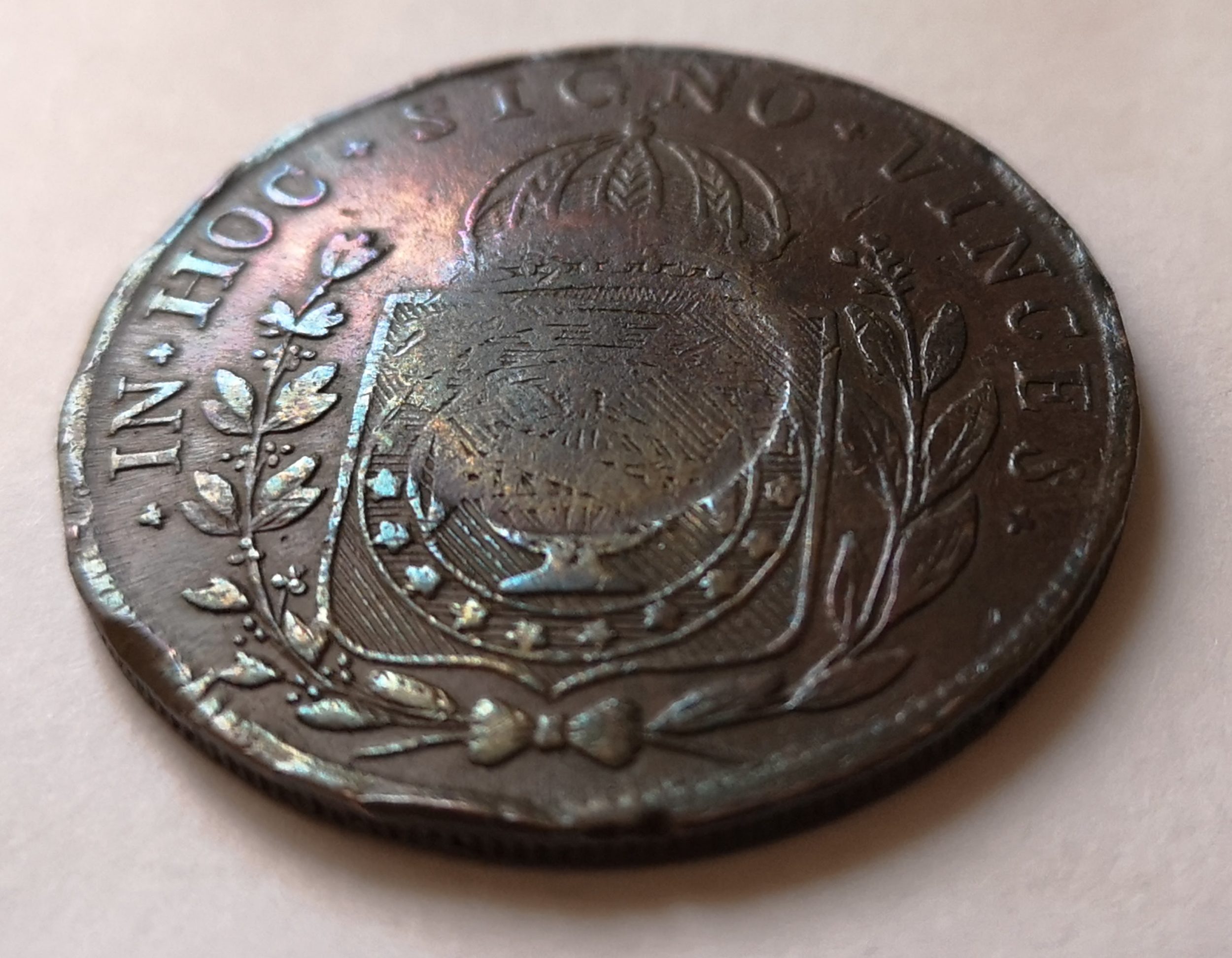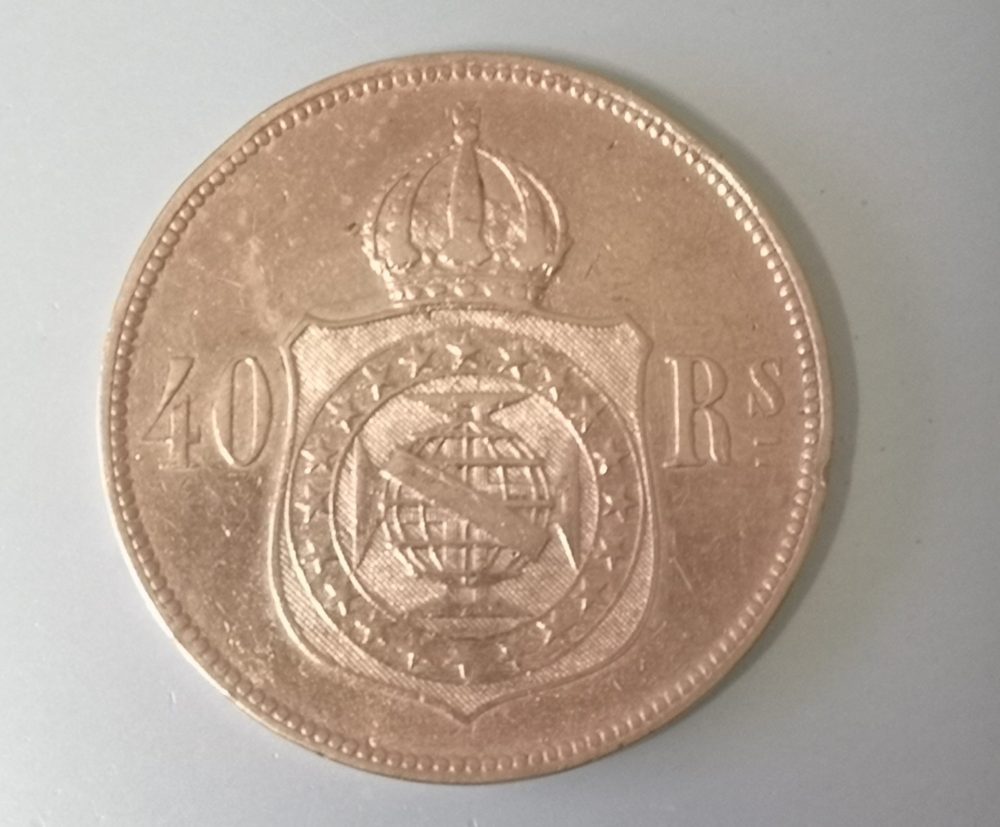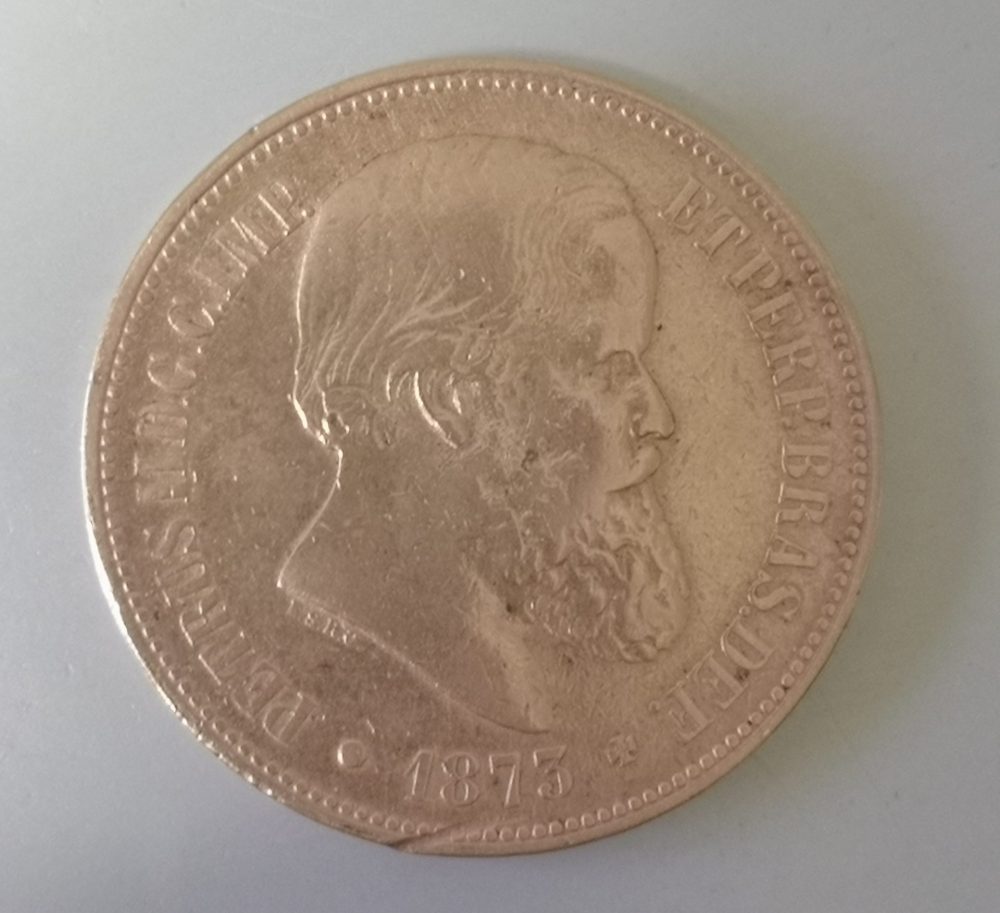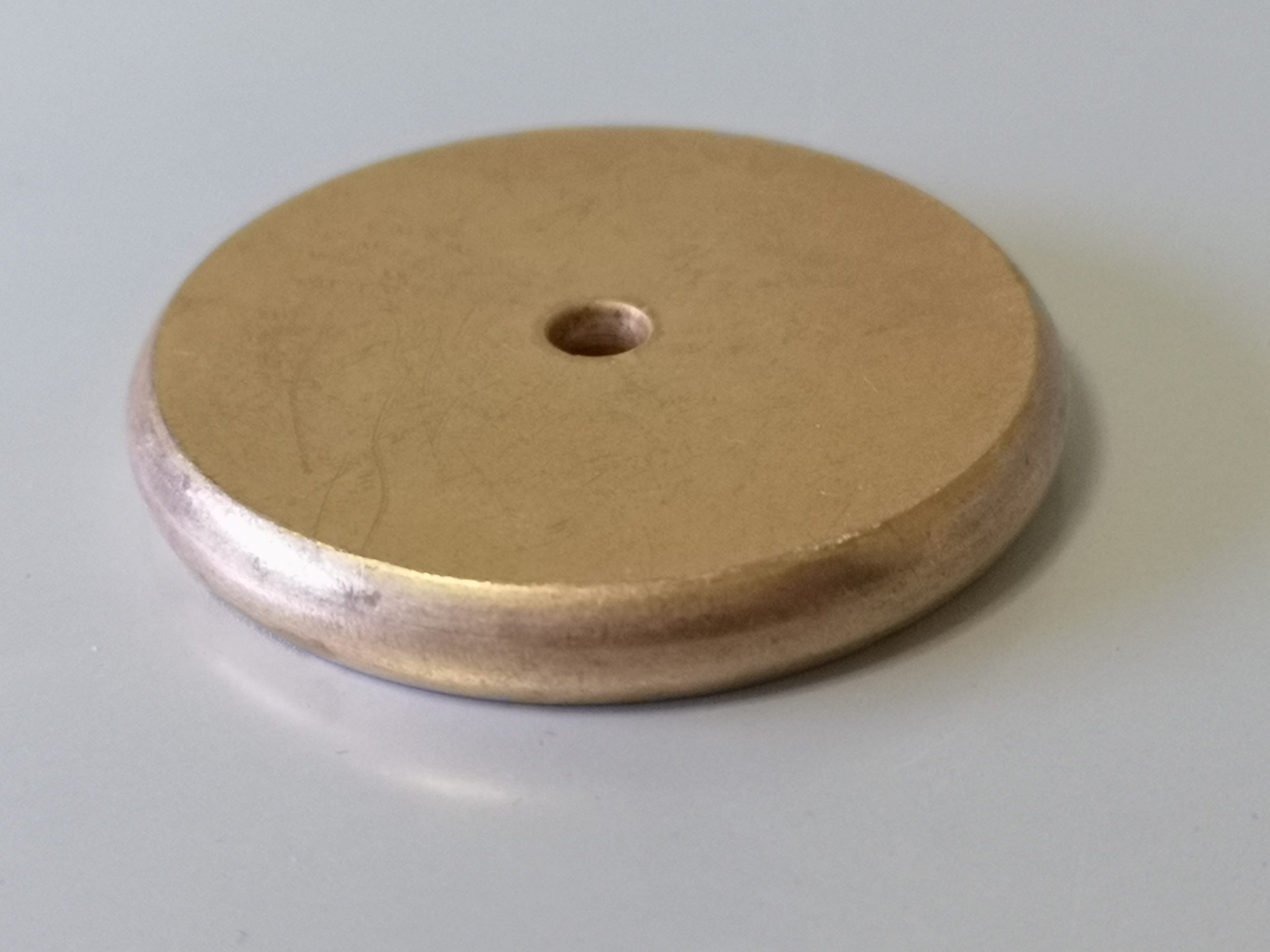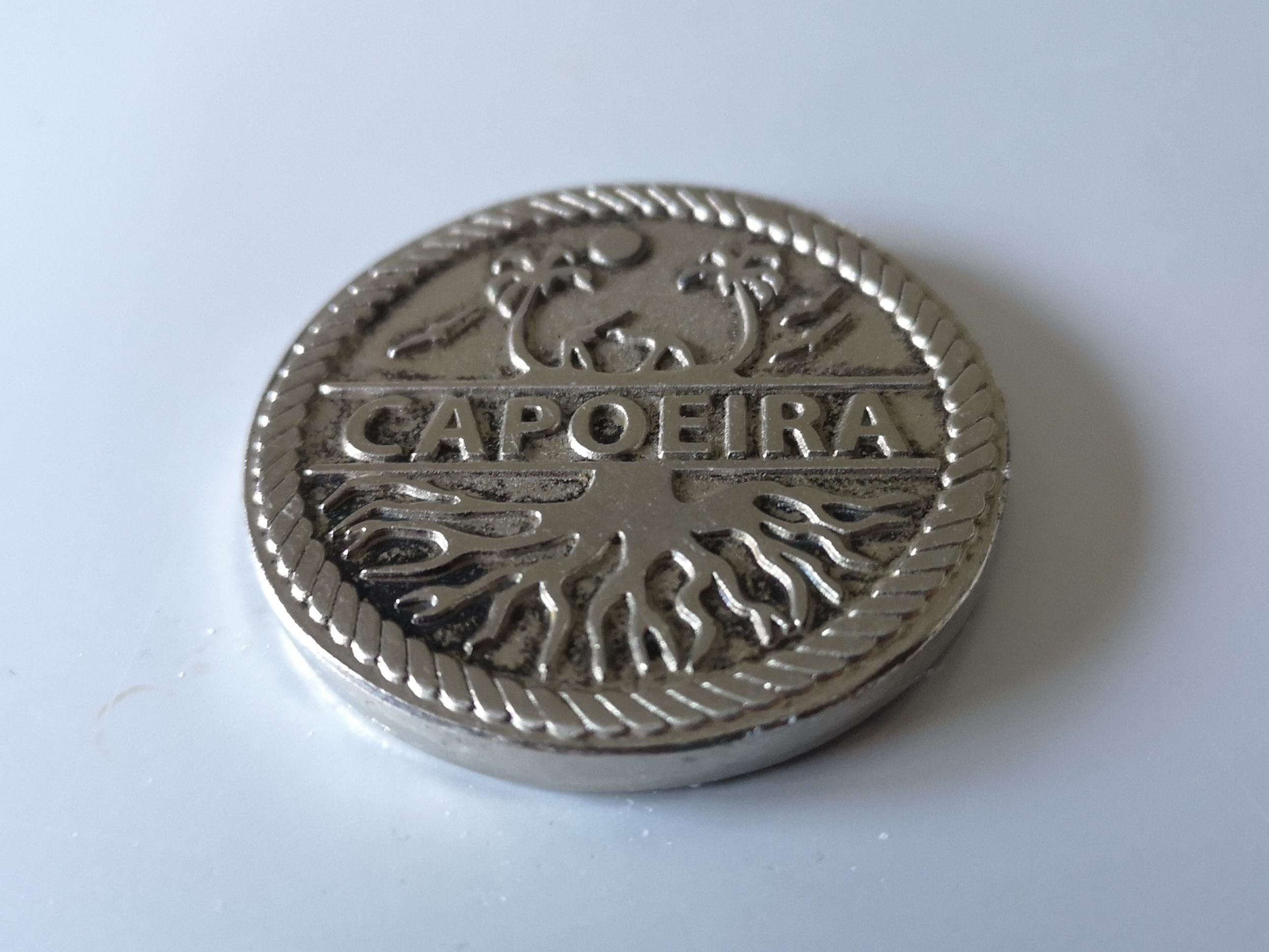We all know the dobrão is an essential part of the berimbau and is used to produce different sounds. But do you know what a dobrão actually is? It’s often not very clearly explained in capoeira literature, only mentioning it is some sort of coin. You probably know a pedra, but have you heard of a vintém or arruela as well? Let’s take a closer look at the origin of the dobrão and its alternatives.
Playing the berimbau
When playing the berimbau you can produce different sounds by creating tension on the string (the arame). By doing so, you shorten the vibrating part of the string which causes a change in frequency. It’s just like playing a guitar: placing your fingers on different positions generates different notes.
To create that tension there are different tools that can be used, the dobrão being the most well known as it is often referenced in songs and literature. But let us first take a look at alternatives that have been used throughout history.
Probably the most commonly used tool up to today is the pedra, which literally means ‘stone’ in Portuguese. Berimbau players usually prefer a flat pebble which is large enough to fit comfortably in their hand. A pedra is free, easy to find and produces a natural sound on the berimbau, making it an ideal accessory.
Around the 19th – 20th century, players often used iron washers which really didn’t cost any money and were easy to come by. Kay Shaffer, a researcher who studied the berimbau in 1977, notes in his research that the berimbaus sold at the Mercado Modelo often came with a free washer, but it didn’t result in a very good sound. A washer is called an arruela in Portuguese. Personally I have never seen anyone using a washer, I assume this practice has mostly died out.
When the player didn’t have a coin, pedra or arruela, sometimes the thumbnail of the hand holding the berimbau was used out of necessity. Mestre Canjiquinha once mentioned this and it is a practice that can be found in Africa as well. I can imagine this wasn’t very comfortable if you played longer than a couple of minutes.
It is important to choose the right tool because the sound of your berimbau will be different depending on what you use. A coin or washer will often result in a more metallic sound.
The dobrão
When we use a metal coin to play the berimbau, we call it a dobrão (or sometimes a vintém). Despite the fact that it is a commonly used term in capoeira, few people know its true meaning. The dobrão has its own little history which deserves to be told.
Doubloon
The origin of the dobrão can be traced back to the doubloon, a golden coin created by the Spanish and used in their territories. Fun fact; those treasure chests full of gold coins that are mentioned in pirate stories were actually chests full of doubloons!
The doubloon was so popular that other European countries created their own versions. Portugal for example introduced the dobrão, a gold coin of 53 grams and a diameter of 37 millimeters. It circulated between 1707 and 1750 and it was the most valuable coin that has ever existed in our history. A single dobrão had the value of 20.000 réis (the currency at the time) and today it’s still worth thousands of euros.
The gold for the coin was mined and the coins were produced in the state of Minas Gerais, Brazil. Minas Gerais was famous for its abundance of gold and the dobrão was there a perfect example of. The dobrões were transported to Portugal and England, they actually never circulated in Brazil.
Real
When Brazil gained independence starting from 1822, it focused on standardizing its own currency, the real (pl. réis). The 40 réis coin was with its 37 millimeters diameter exactly the size of the Portuguese dobrão, causing Brazilians to call this coin the ‘Brazilian dobrão’. Obviously, a major difference was its value as the 40 réis coin was made from copper instead of gold. About ten years later, in 1833, Brazil introduced the mil-réis as the new currency to counter its growing inflation. The new real was defined as 1000 old réis (hence the ‘mil’ prefix). De original dobrão lost its value rapidly due to the change. It is this original 40 réis coin that people started using to play the berimbau, probably because it fitted nicely into the hand when playing thanks to its large size. When the dobrão started being used with the berimbau is unknown, but it was probably more towards the end of the 19th century.
Meanwhile, the new 40 réis coin (or 0,004 mil-réis) was in circulation. Some sources claim that capoeira’s used this coin to play the berimbau, but I think that chance was rather small since most capoeira’s were poor and could use any money they had in much better ways. The 0,004 mil-réis coin was with its three centimeters just slightly bigger than our two euro coin. Its possible to use it to play the berimbau, but a dobrão feels a lot better.
Cruzeiro
In 1942 the Brazilian currency changed again, this time to the cruzeiro. The mil-réis lost its value and it is possible that people started using the 0,004 mil-réis coin more often for their berimbau. At that time, the original dobrão was probably harder to find. According to Kay Shaffer, a 40 réis coin was used in the seventies to play berimbau. He found that some of these coins could still be acquired at antique markets. This indicates that at least some people still used a dobrão in that time period. Starting from the second part of the 20th century, the term dobrão became more widely used to denote any metal coin that was used with a berimbau.
Vintém
And what about the vintém? It is a term you occasionally hear in capoeira songs. The original vintém was a coin that circulated together with the Brazilian dobrão between 1822 and 1833. This coin was with its three centimeter diameter smaller than the dobrão and had a value of 20 réis. Other coins that were produced later with a value of 20 réis were also called vinténs. Before the mil-réis was released, the Brazilian government halved the value of its coins by counterstamping them. You can clearly see this in figure 2. An 80 réis coin became 40 réis and the 40 réis coin was turned into 20 réis. Taking the short period into account that the original coins were in circulation, chances are that when people talked about a vintém they actually meant a modified 40 réis coin, or in other words… a dobrão.
Final thoughts
People often tell that capoeira’s always had a dobrão in their pocket to play berimbau, that is however improbable since the coin was either of too much value or hard to find. Most capoeira’s had little to no money and probably used an iron washer or a pedra. Undoubtedly, the original dobrão had an emotional value for the mestres who did possess one, as it was a remnant of the slavery era and a memory thereof. A coin that was then far beyond the reach of a slave was now part of the instrument that symbolizes the freedom of the black man.
Today you don’t see any real dobrões in capoeira rodas anymore. Nowadays dobrões come in all sorts of materials and engravings. Sometimes a small hole is drilled to tie it to the berimbau with a piece of rope, so it doesn’t get lost. A good dobrão or pedra is essential for the berimbau player. Losing your favourite dobrão or pedra can feel like losing a hand.
Sources
Fryer, Peter. Rhythms of Resistance. Londen : Pluto Press, 2000.
Lewis, J. Lowell. Ring of Liberation: Deceptive Discourse in Brazilian Capoeira. Chicago : The University Of Chicago Press, 1992.
Moedas do Brasil. [Online] [Citation of: 1 February 2021.] http://www.moedasdobrasil.com.br.
Moreira de Oliveira, Norival. Online class with Mestre Nô. 5 December 2020.
Plínio, Pierry. 20.000 réis: o dobrão brasileiro. Collectgram. [Online] 7 Juni 2018. [Citation of: 1 February 2021.] https://collectgram.com/blog/20000-reis-o-dobrao-brasileiro.
Shaffer, Kay. O berimbau-de-barriga e seus toques. sl : Monografia Nacional de Arte (Funarte) & Ministério da Educação e Cultura, 1977.
Vintém. Wikipedia. [Online] 20 Februari 2019. [Citation of: 1 Februari 2021.] https://pt.wikipedia.org/wiki/Vint%C3%A9m.
Washington, Bruno. A Alegria Da Capoeira. sl : A Rasteira, 1989.
— Vinho
